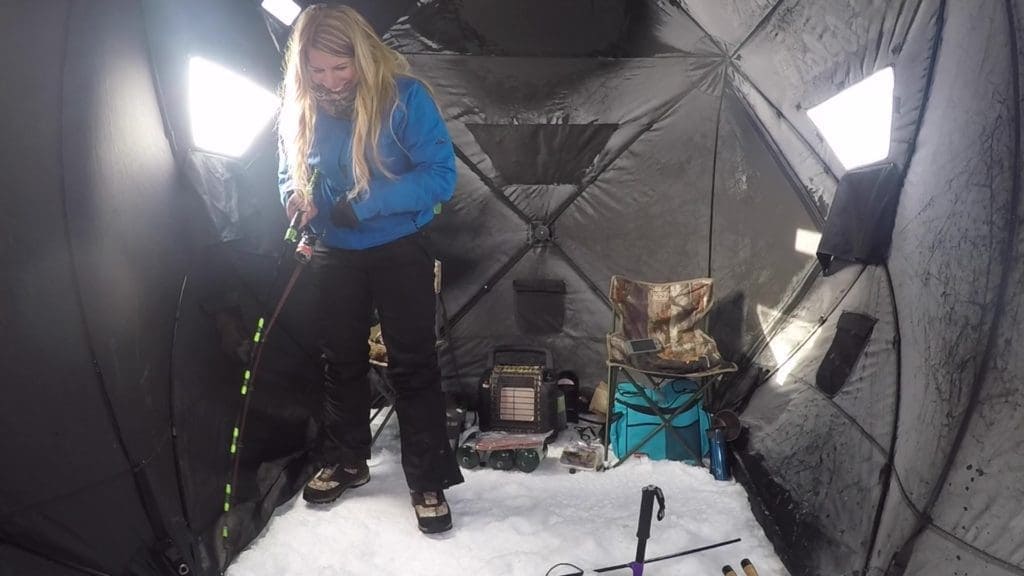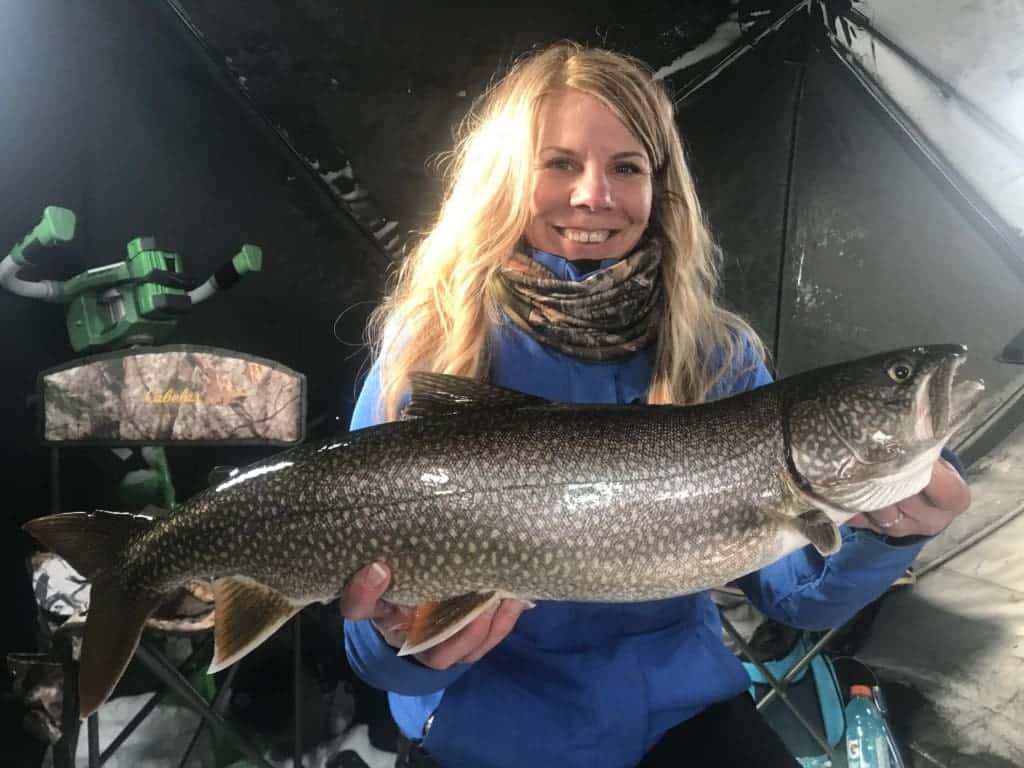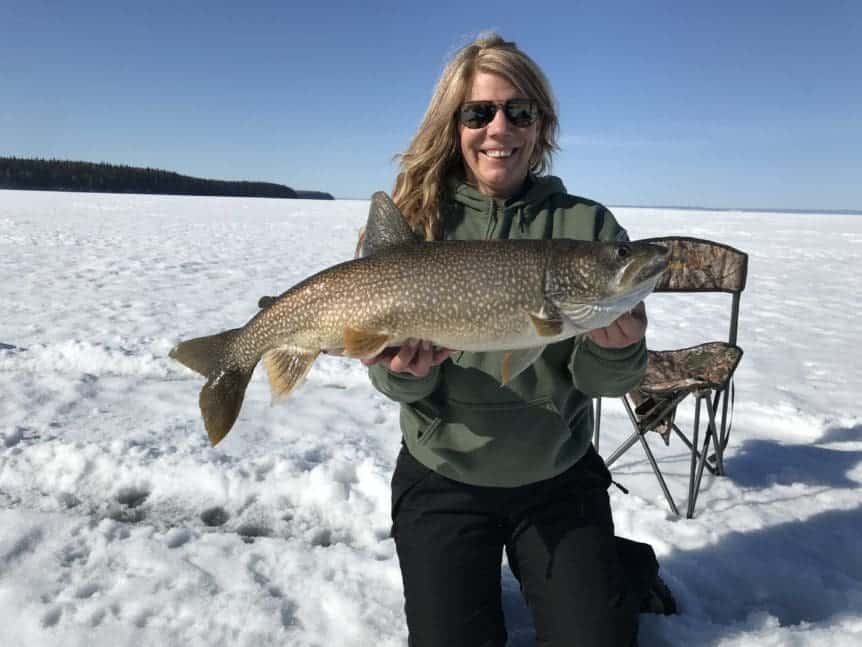By: Lisa Roper
Pictures by: Lisa Roper and Mat Weaver
Crunch, crunch, crunch. My boots connect with the icy snow. It is a sound I have come to love in the stillness of the morning before the sun crests the horizon. Pulling my sleigh across the frozen lake with fishing gear in tow, I drill my first hole and drop a line into the ice-chilled depths of the water.
My Kims Watermelon tube jig baited with a frozen chunk of herring falls 80 feet, tapping the lake bottom. I slowly begin to spool the line back up as I watch the laker chasing my lure on the Sonar. The faster I reel, the quicker the laker closes the distance to the bait. The line goes tight, and with the bend in my Screamer 43” medium heavy fishing rod, I know I’ve landed my first Cold Lake laker.

Lisa First Laker
The battle begins. As I attempt to retrieve the line, the laker dives back down to the bottom, taking everything I gained with him. I try again to reel back the 20-pound braided line attached to an 18-inch fluorocarbon leader, but this fish wants no part of it. My drag screams out as he takes another run. The tug of war continues up and down the water column until he finally allows me to bring him up for a quick picture.

Lisa First Laker
I release this energetic laker for another ice angler on another day. With three lake trout caught and released this January day, I know I’ll be back. The challenging and aggressive bite has me hooked.
With my truck loaded with fishing gear and a sleeping bag, I’m on a road trip to Cold Lake. Since January, the weather has warmed up, and the three-hour drive allows me to think about the locations I’ll fish and the techniques I’ll use.

I access the lake at the Cold Lake Provincial Park boat launch at 6 a.m. I set up just out from one of the points with a large flat shelf that drops down 80 feet. I send my glow tube jig to the bottom, but I’m finding the lake trout. Instead, I’m marking them mid-column or higher on my sonar.
Lake Trout are cold-water blooded fish and like water temperatures around eight to 12 degrees Celsius. While most fish become sluggish with the colder water in the winter months, lake trout stay active and maintain their strength.

I quickly realized the lake trout patterns have changed; they are not on the lake bottom like in January. I release the bail as my glow tube jig, baited with a frozen smelt, drops to 40 feet. I instantly have a mark on the sonar, and with a few quick jigs, followed by a fast retrieval, the laker is on the move — but it loses interest and peels off.
The sonar marks fish all day, but I can’t seem to land them. Laker after laker follows my lure and spins off; it’s a tough day of fishing.
At night I sleep in my truck on the ice — with no heat. I’m glad I spent the money and purchased a good-quality sleeping bag for extreme temperatures. It is cold.
I’m up early to watch the sunrise with hopes of landing a laker. I drill holes in deeper water but continue to work the mid-column. The sonar lights up as a school of baitfish comes through, which can only mean the lake trout are close behind.

Persistence pays off. This laker aggressively chases and hits my tube jig just under the ice. Fish on!
Read more
- See Lisa’s other article about ice fishing in the Lac La Biche region.
- See our new Ice Fishing page.
- Learn more about the Winter Adventures you can have East of Edmonton.
- Plan a trip to experience the M.D. of Bonnyville.

